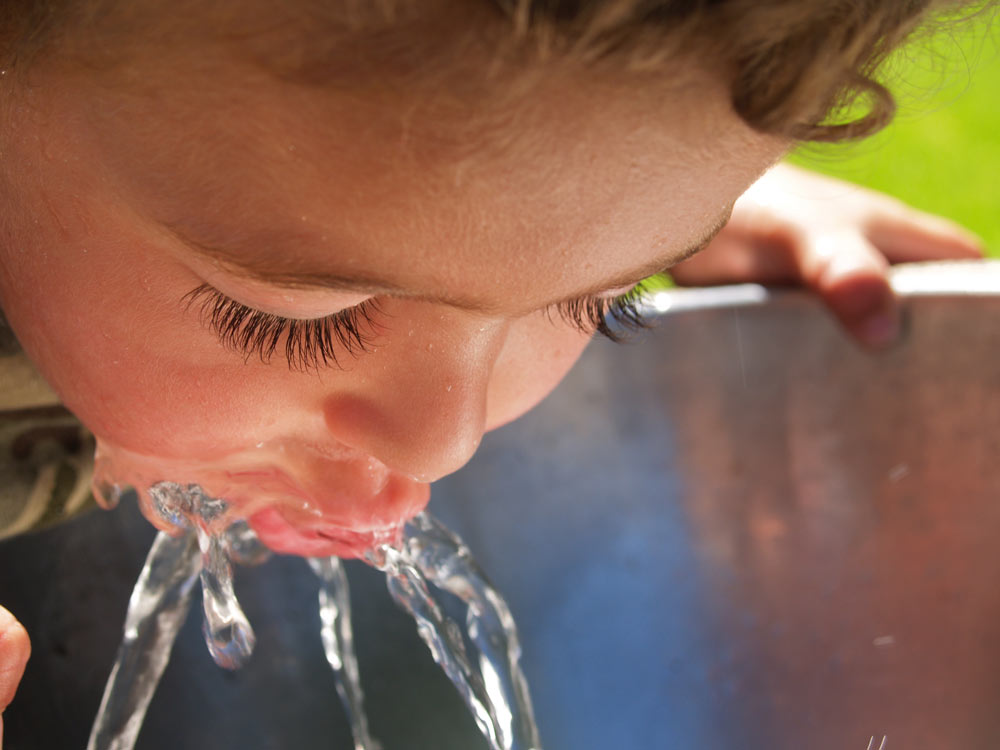When parents think about the safety of their children at school, their minds go to certain, obvious things. They’re worried about bullying or drugs, or the mischief that kids can get up to when left to their own devices. What they’re probably not worried about is water quality. But they should be.
An alarming number of public schools throughout the United States have subpar drinking water—and a handful have such low quality that it’s unsafe for kids to drink at all! As a parent, you might be appalled to learn this. Unfortunately, without a major referendum to fund a massive overhaul to the school’s water supply system, your kids will be stuck with the supply they have. The good news is, there are ways to safeguard them from impure, subpar water.
Water Access Regulations
Parents need to realize that poor water quality is often not the fault of schools. No school is wantonly providing poor quality to its students! In fact, schools are expected to meet U.S. Environmental Protection Agency (EPA) standards for potable water quality. The problem is that, while the supply itself is above board, the plumbing, pipes, and storage it travels through are the source of contamination.
Maximum Contamination Level (MCL)
The USEPA’s lead action level of 15 parts per billion (ppb) for the USA Water Supply System has been in place since 1991 (down from an original 50 PPB Level. Many schools have adopted a lower standard of 5 PPB.
In the event the supply isn’t safe, schools need a contingency plan. Often, that’s mandating bottled replacements or using point-of-use purification systems.
How Safe is the Water in Your Child’s School?
Most parents just assume that the quality in their kids’ schools is safe. School is supposed to be a safe place, so why wouldn’t the supply also be safe? It can be a rude awakening when the district sends them a letter noting the sub-optimal quality, with a letter encouraging parents to send along a bottled replacement. It prompts all sorts of questions—the biggest being what, exactly, is unsafe about the school’s supply?
Most often the problem is lead. Many schools have plumbing infrastructure that goes back to the 1950s and 60s, when lead plumbing was the standard. The issues stemming from lead plumbing are widespread. Despite this, only 15 states and the District of Colombia have any standards in place for mandating lead testing in school water systems!
It gets worse. With the COVID-19 pandemic and school closings, the quality in schools has dropped. The longer fluid sits idle in pipes, the more contaminated it becomes—not just from lead, but from bacteria such as legionella and waterborne microbes, as well. Maintenance experts recommend a “flushing event” before schools reopen, but it’s unlikely to occur since it’s a costly procedure that requires coordinated line jetting by licensed plumbing experts.
Schools are faced with outdated infrastructure and the rippling effects of the pandemic, and it’s taking a toll on the supply like never before.

Recent Dangers
Lead and other contaminants are common across the country. It’s enough to make you wonder, “is my kids’ school affected?” It depends on where you live:
- Detroit: More than 50 Detroit public and charter schools have tested high for lead, copper and other metals in their water.
- Atlanta: Roughly half of all Atlanta Metro schools have sub-par quality and have tested high for lead.
- Portland: Even in the Pacific Northwest, known for crystal-clear waters, public schools are plagued by lead.
- Orlando: Just outside of Orlando in Polk County, students needed to bring bottles to school in 2019 because the quality was so bad.
- Chicago: Schools on the south side of Chicago test high for lead in their water, alongside other metals and microbes.
The problems go beyond these big cities, too. Schools across the country are experiencing high lead levels and other quality issues, from sea to shining sea. It’s a problem that won’t disappear on its own.
How to Provide Safe Drinking Water
There are two ways to provide children with safe drinking water at school. The first, is through point-of-use filtration systems; the second is through individual filtered bottles.
Aquaspace® is living proof of the effectiveness of school point-of-use water filtration systems. We have a partnership with the Washington D.C. Public School System, where we supply all of their elementary, middle, high, and charter school fountains and kitchenette sinks with lead, chlorine, and cyst reduction filters. Not only have lead levels plummeted, kids have been able to enjoy clean, safe drinking water while at school! This is particularly impressive because the Washington DC Public School System placed into effect a 1 PPB MCL for all their schools.
For parents concerned specifically about their child’s access to a safe supply at school, a filtered water bottle is a great option. Kids can fill up their bottle from any tap, regardless of contaminant levels, and let the Aquaspace® filter go to work. This is often great for older kids, who may be on-the-go throughout the day between classes or after-school activities.
If your child attends a school where the water-quality is subpar, there are solutions. If you have the power to affect change at the facility or district level, reach out to Aquaspace® about school point-of-use systems. If you’re concerned for your child specifically, equip them with a filtering bottle that’ll keep them safe while they drink.




Leave a comment